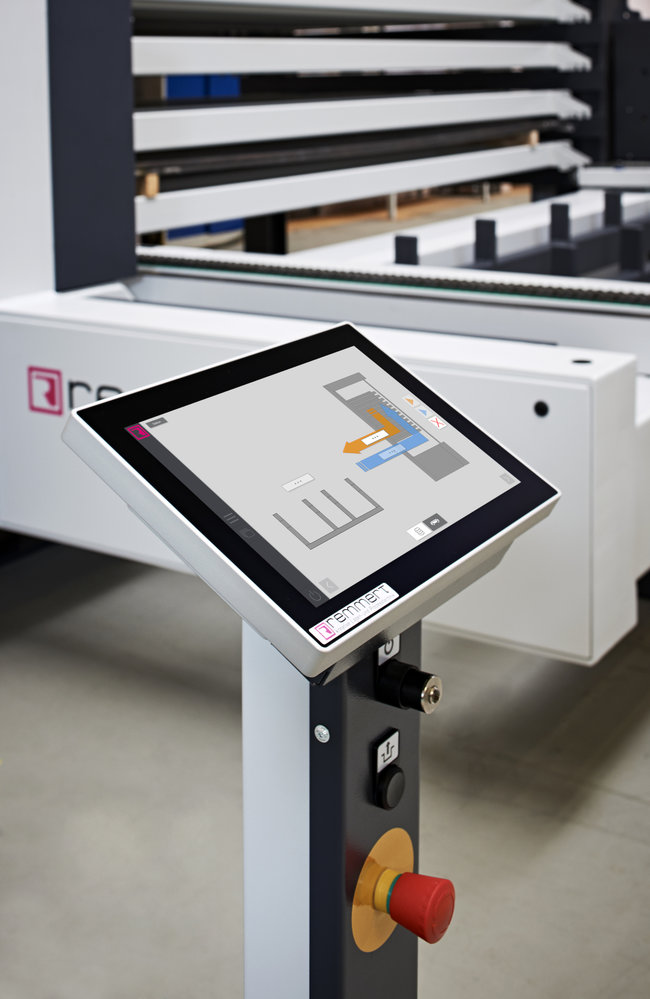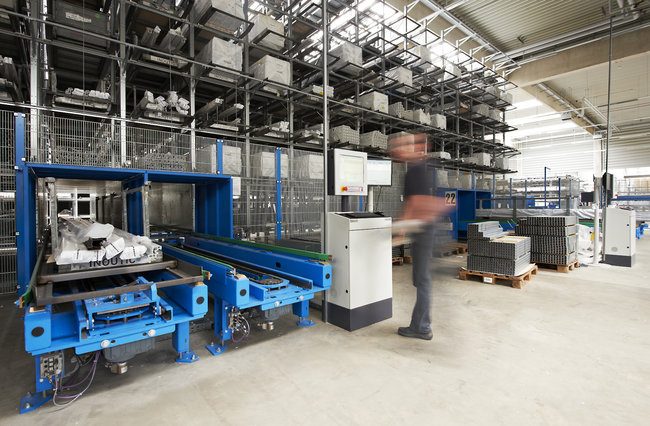Automation is very much the direction in which things are moving: More and more applications and processes in intralogistics are based on the use of AI and the concept of smart factory. The material handling expert Remmert has been driving development forward for twenty years now. As a pioneer in the Industry 4.0 segment, Remmert offers a well-founded forecastof the future and summarisesthe aspectsthat companies must address on the way to the smart factory.
1. Reconfiguring the relationship between man and machine
The smart factory of tomorrow is defined by an extremely high degree of automation that allows many operations to be carried out without human intervention. In this concept, humans are by no means superfluous, but rather take on new duties in their role as operators. Meanwhile, supervisory control activities and intervention require a different level of qualification and skills. For this reason, it’s advisable to develop and use a software that is as intuitive as possible and that incorporates a user interface that is simple for the staff to learn. For example, material flow expert Remmert has created SMART Control, a solution for intelligent control and operation of its FLEX process automation modules. In addition to a modern software architecture, the system features integrated management of users and access rights as well as extensive service functionality and the provision of status information for the handling of material and warehouse data.
In a networked intralogistics system, the rule of thumb is: the larger, the more complex. Against this background, it’s essential that the user interface of the software used is comprehensible, modular and transparent. Programmers and designers are well advised to make use of strong visual forms of communicating, such as pictograms. This is complemented by the use of trained lean managers, who are specialized in systematically reorganizing processes and increasing effectiveness in all areas.
2. Despite euphoria: questioning the actual benefits of AI and ML
AI and ML (Machine Learning) will play a key role in intralogistics in the future. Nevertheless, every potential user should question beforehand whether a smart solution is indeed superior to the classic algorithm. This is because on the one hand, an AI or ML-based tool has to be trained, which takes time. On the other hand, decisions made by an AI system may be difficult to understand. From a technical point of view, such a solution doesn’t make autonomous decisions but draws from the programmed pool of activities. What’s essential here is to weigh up and evaluate the added value in each individual case.
3. Strategically combining existing and new plants
A key success factor for the implementation of a smart factory is the transformation process, in particular, the parallel use of new and existing facilities. The decisive factor is that the machines can be combined and have a modular design enabling them to be expanded by adding modules, as is the case with the Remmert FLEX family, for example. The use of these modular automation solutions offers the greatest possible degree of flexibility and future-proofing for users, allowing them to react to individual requirements. As a rule, old machines are gradually replaced with new models with networking capabilities. Here, too, it is important to involve employees at an early stage and to familiarize them with the possibilities.
4. Intensifying the creative search for applications
As a solutions provider, Remmert is busy working on upgrading existing technical solutions and the company works very closely with cooperation partners and research institutes. These include the research project ADAM (Autonomous aDAptive Machine) in cooperation with the University of Hamburg, which targets the autonomous adaptation of machines to unknown environmental parameters, and the Regional Innovation Network OWL in the area around Bielefeld. These provide an opportunity to discuss potential applications within the framework of hands-on workshops. The mutual exchange of information and know-how with potential users also generates valuable input for practical applications. SortFLEX, a flexible and fully automated solution for sorting laser-cut finished parts, also underwent a field test with users prior to its market launch, enabling it to be adapted and optimized to specific requirements.
“Based on twenty years of experience in the digitalization of processes and Industry 4.0, we can confirm that software and highly efficient interfaces have always played a very important role and will continue to do so”, explains Ralf Kruse, Head of Data Systems Technology at Remmert. “This was particularly evident during the development of our automation solutions – both with the LaserFLEX, where the challenge was to provide a software connection to processing machines from a wide range of manufacturers, and with the SortFLEX, which can also be deployed independently of the machine manufacturer. We will continue on the path we have taken and will continue to concentrate on providing the users of our technologies with innovative solution concepts that offer a high degree of user-friendliness.”

